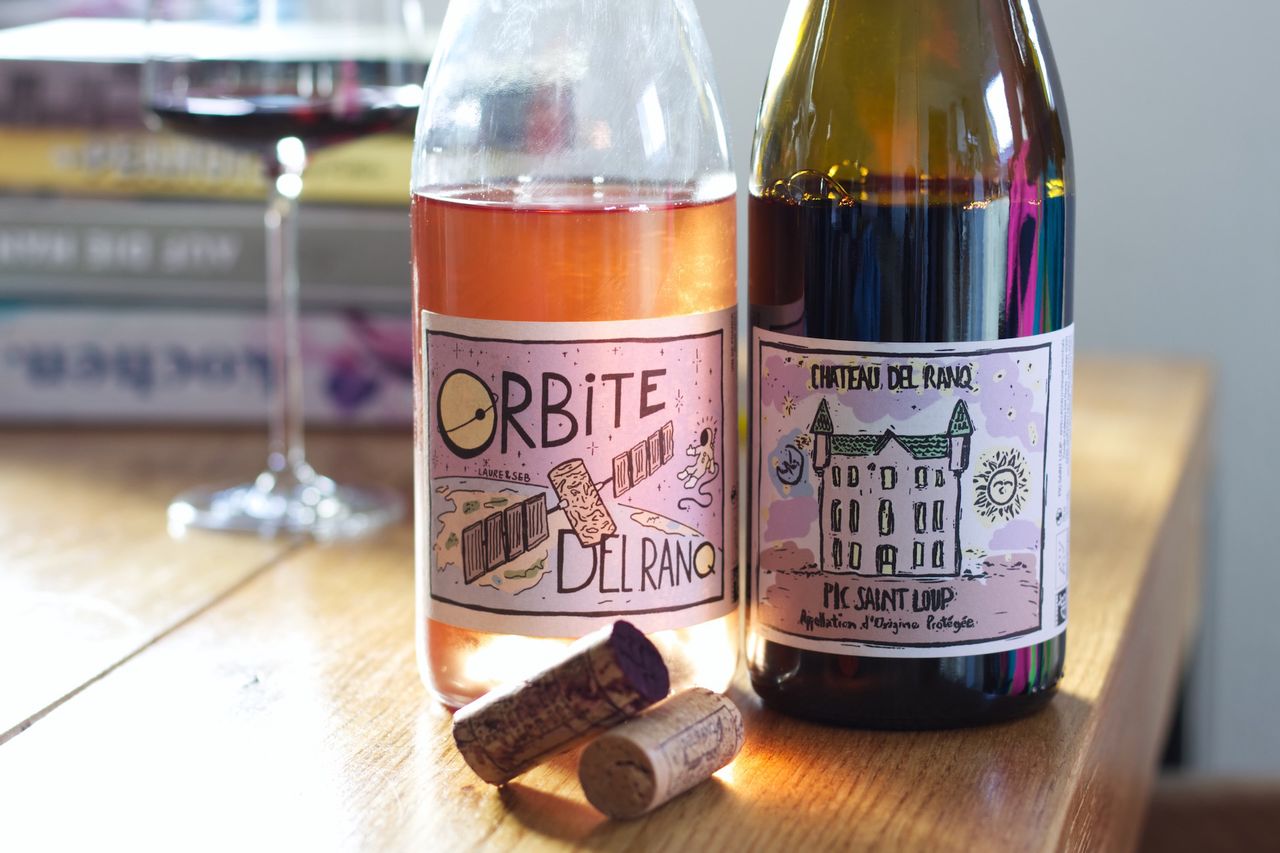Two Bottles Chateau Del Ranq
We drink from the south of France from the Chateau del Ranq winery a bottle of Orbite Rosé 2021 and a bottle of Pic Saint Loup 2020.

Those who read here more often know that I am a label drinker. However, not necessarily the labels with big names for the social media flex, but I buy more often than I want to admit wines that I just like from the looks of their label without having any idea what I’m actually buying. With careful selection of the selling dealer, however, you can do that with a clear conscience and I have rarely experienced a disappointment and at the latest when the wines make it into a post here, the purchase has once again been worth it. And seriously, the cork satellite is just great, isn’t it? Besides, with these two wines you can bring a bit of summer into your glass during the cold season, at least that was the idea. It wasn’t until 2018 that Laure Barthélémy and Sébastien Freychet started making wine north of Montpellier in Claret at the Chateau del Ranq winery and, as the current generation, gradually took over the vineyards. The appellation Pic Saint Loup, in which the winery is located, is itself also still super fresh and may only appear since 2016 at all on the bottle as AOP. The two cultivate the now full 10 hectares of the winery biodynamically. The vines stand here on limestone and clay in a climate that is of course still influenced by the proximity to the sea, but also under the influence of the mountainous foothills of the Massif Central. Today we drink the already mentioned Orbite with the satellite on the label. This is a rosé that is half Cinsault and half Grenache. The Pic Saint Loup 2020 was made mostly from Syrah with a small amount of Grenache. The wine is macerated for three weeks and then aged in wood barrels for 14 months.
The Orbite is relatively subtle on the nose first, there is some red fruit and a few berries. The wine seems surprisingly cool, has some melon, peach and a bit of strawberry. On the tongue this is tight and fresh with great acidity and a touch of peach liqueur on the finish. This is really fun and drinks very easily.
Overnight, the aroma doesn’t change much at all, but in the mouth it takes another big step forward. The structure that it has gained ensures that on the tongue there is a lot going on now. I don’t drink rosé very often, and when I do, it’s always those rosés that are said to taste nothing like rosé. Which, of course, is pretty much bullshit, because they are rosé and if they taste like they do, then rosé tastes like rosé tastes. Anyway. The important thing is that you can now assess much better what you’re getting into when I say that I really like this rosé and you then know whether you want to try it or not. This is so serious and yet so light and straightforward with enough substance to never get boring.
The Pic Saint Loup, however, takes it up a notch. There is a really great dark fruit in the wine, there is spice and a good portion of herbaceousness. This is dark but neither warm nor fat. The tannin on the tongue is soft and flattering and again the fruit comes through in full force. There’s freshness, juiciness, length and a bit of stone as well. This already smells like the south and summer, but just without being warm.
And the overnight evolution is very similar to that of the rosé, at least in its approach. Where the nose retains the great fruit, the texture and structure in the wine takes another step forward. There’s more spice now, there’s tapenade and even more herbs. I’m having a bit of a hard time assessing how this might age. But since I like it so much just the way it is now, I don’t want to worry about it anyway. And besides the great content, the labels are lovely as well. What more could you want.